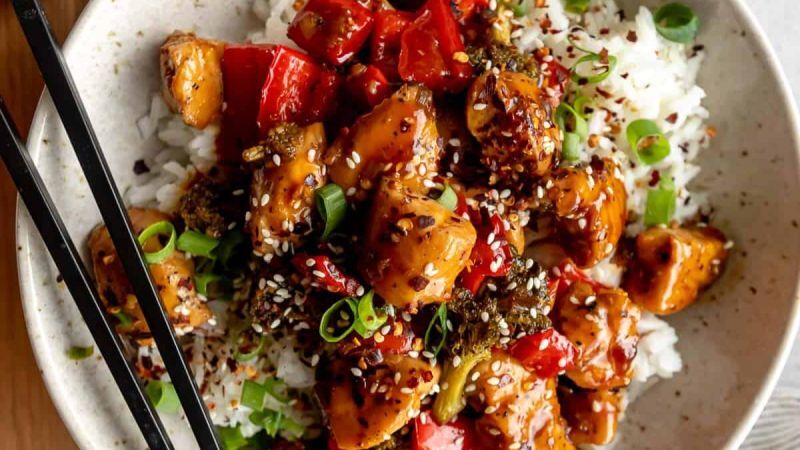

Teriyaki, a culinary gem of Japan, is a cooking technique and sauce that involves grilling or broiling foods, typically meat or fish. What sets it apart is the glaze, a blend of soy sauce, mirin (a sweet rice wine), sugar, and other ingredients like ginger or garlic. ‘teriyaki’ is a fusion of two Japanese words: ‘teri’, meaning lustre or shine, and ‘yaki’, meaning grilled or broiled.
The roots of teriyaki can be traced back to the Edo period in Japan (1603-1868), a time when soy sauce became a ubiquitous seasoning for various dishes. Grilling meat with a soy-based sauce likely originated during this period, marking a significant culinary milestone. However, the term ‘teriyaki’ as we know it today emerged in the 20th century, further cementing its cultural significance.
During the post-World War II period, with its unique blend of flavours, teriyaki gained popularity in the United States as Japanese cuisine became more widely appreciated. Today, teriyaki sauce, a testament to the global reach of Japanese culinary traditions, is a staple in Japanese cooking and is also popular in international cuisine, especially in dishes like teriyaki chicken, beef, or salmon.
The key to a good teriyaki dish is the perfect balance of sweet and salty flavours in the sauce, which caramelizes and adds a mouthwatering glaze to the grilled or broiled food. Additionally, the umami-rich ingredients like soy sauce and mirin enhance the overall taste of the dish, creating a culinary experience that is both satisfying and memorable.
Overall, teriyaki cooking techniques and sauces have a rich history and continue to be enjoyed by people worldwide for their delicious flavours and versatility in various recipes.